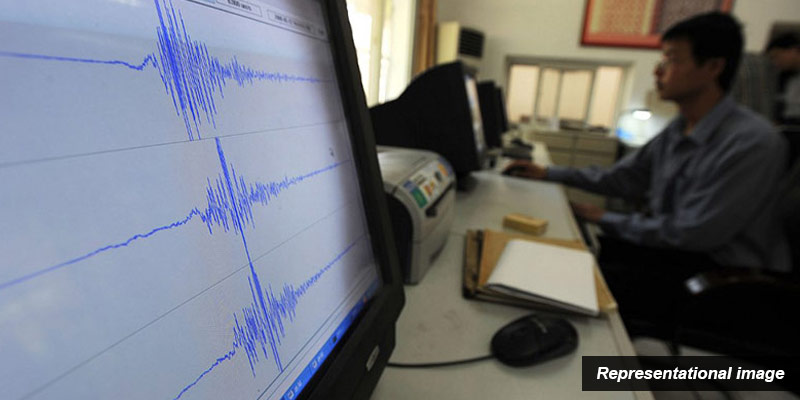- India
- Feb 17
What is shallow earthquake?
• Strong tremors were felt in New Delhi and adjoining regions as an earthquake of 4.0 magnitude struck the region early on February 17.
• There were no immediate reports of any damage or injuries.
• The epicentre of the quake was in the Jheel Park area of Dhaula Kuan .
• The National Center for Seismology said the earthquake struck at a focal depth of five kilometres at 5:36 am.
• Delhi is located about 250 kilometres from the seismically-active Himalayan collision zone and experiences shaking frequently from far and near-field earthquakes.
• New Delhi is placed in Seismic Zone IV in the seismic zoning map of India, the second highest in the country.
What is shallow earthquake?
• Earthquakes can occur anywhere between the Earth’s surface and about 700 kilometers below the surface.
For scientific purposes, this earthquake depth range of 0-700 km is divided into three zones: shallow, intermediate and deep.
i) Shallow earthquakes are between 0 and 70 km deep.
ii) Intermediate earthquakes 70-300 km deep
iii) Deep earthquakes 300-700 km deep.
In general, the term “deep-focus earthquakes” is applied to earthquakes deeper than 70 km.
Some terms related to earthquake:
Earthquake: An earthquake is a sudden, rapid shaking of the ground caused by the shifting of rocks deep underneath the earth’s surface. Earthquakes can cause fires, tsunamis, landslides or avalanches. Earthquakes are classified as, Slight (M<5.0), Moderate (5.0<M<6.9) and Great (M>7.0) depending upon the magnitude on the Richter scale. An earthquake having a magnitude, M<2.0 is termed as a microearthquake.
Seismograph: A seismograph, or seismometer, is an instrument used to detect and record earthquakes. Generally, it consists of a mass attached to a fixed base. During an earthquake, the base moves and the mass does not. The motion of the base with respect to the mass is commonly transformed into an electrical voltage. The electrical voltage is recorded on paper, magnetic tape, or another recording medium. This record is proportional to the motion of the seismometer mass relative to the earth, but it can be mathematically converted to a record of the absolute motion of the ground. Seismograph generally refers to the seismometer and its recording device as a single unit.
Richter scale: The Richter magnitude scale was developed in 1935 by Charles F. Richter of the California Institute of Technology as a mathematical device to compare the size of earthquakes. The magnitude of an earthquake is determined from the logarithm of the amplitude of waves recorded by seismographs. Adjustments are included for the variation in the distance between the various seismographs and the epicenter of the earthquakes. On the Richter Scale, magnitude is expressed in whole numbers and decimal fractions. For example, a magnitude 5.3 might be computed for a moderate earthquake.
Epicenter: It is the point on the surface of the Earth, vertically above the place of origin (hypocenter or focus) of an earthquake.
Fault: A fault is a fracture or zone of fractures between two blocks of rock. Faults allow the blocks to move relative to each other. This movement may occur rapidly, in the form of an earthquake — or may occur slowly, in the form of creep. Faults may range in length from a few millimeters to thousands of kilometers. Most faults produce repeated displacements over geologic time. During an earthquake, the rock on one side of the fault suddenly slips with respect to the other. The fault surface can be horizontal or vertical or some arbitrary angle in between.
Aftershock: An earthquake that follows a large magnitude earthquake called, “main shock” and originates in or around the rupture zone of the main shock. Generally, major earthquakes are followed by a number of aftershocks, which show a decreasing trend in magnitude and frequency with time.
Manorama Yearbook app is now available on Google Play Store and iOS App Store

